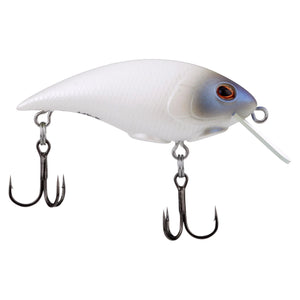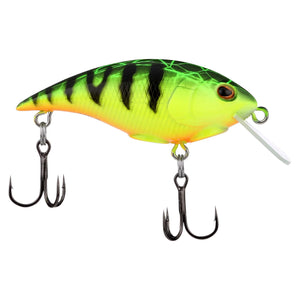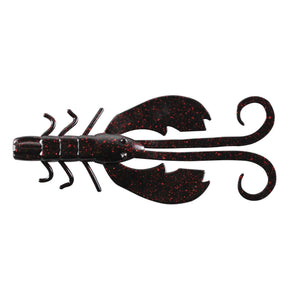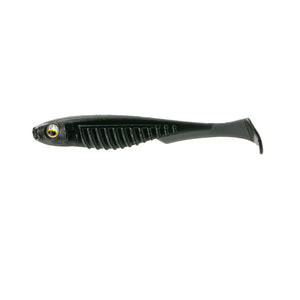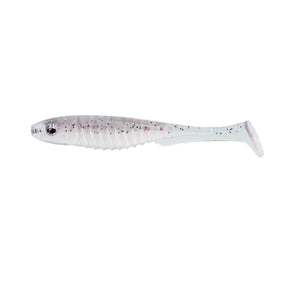What is it about a top-water strike at dawn that hits harder than your morning coffee? Maybe it’s the silence before the chaos. Or the way bass are blowing up across Canadian waters like never before, and anglers everywhere are chasing that hit.
Between better gear and booming angling communities, 2025 is becoming one of the best bass seasons yet. Tossing plastics in calm bays? Flipping jigs through timber? Your setup could be why you hooked a trophy or missed the strike entirely.
Keep reading to learn our best fishing tips, top bass fishing spots across the country, and the gear that’ll help you tick more giants off your list.
Largemouth and Smallmouth Bass
Let’s talk about the two stars of Canadian bass waters: largemouth and smallmouth.
Largemouth (Largies) love warmer shallows and thick cover, like lily pads, weeds, and sunken logs. Smallmouth (smallies) prefer rocky points, current edges, and cold water. Both hit hard, but they hunt differently.
Largemouth bass are ambush predators. They hunker down in heavy vegetation or structure and explode on prey that get too close. Largies rely more on stealth and power.
Smallmouths are chasers. They cruise open water, track baitfish, and strike from a distance, so you have to fish them differently — flipping into cover for largies, or working moving baits in clear water for smallies.
Best Canadian Bass Spots by Region
Here’s where the big bad bass are spending their time this year:
Ontario
With many structure-heavy lakes, backwater rivers, and deep rocky basins, this province offers opportunities for Canadian bass species throughout every season.
- Kawartha Lakes: A long-time favourite for southern Ontario anglers, the Kawarthas are a chain of connected lakes like Buckhorn, Pigeon, and Rice. These waters are thick with weeds, docks, and shallow bays, producing ideal conditions for largemouth. Toss weedless texas rigs into the slop or skip under docks with soft stickbaits like the 5" True Center Stick or flipping jigs and hold on tight!
- Lake Simcoe: Arguably one of the top smallmouth bass destinations in the country, Lake Simcoe has deep, clear water and textbook structure, including rocky points and sand transitions. Drop-shot rigs, spybaits, and jerkbaits shine here, especially in summer. Look for fish stacked on offshore shoals, or shallow sand flats with scattered rock and use natural baits like the Rapala Crush City Mooch Minnow to keep things subtle.
- Rideau River: Depending on the section, you’ll find both species here. Largemouth dominate the slower backwaters and canal sections, while smallmouth hold along the deeper rocky stretches. Kayak anglers love hanging out here as they look to escape the crowds and test various techniques across habitats.
Gear pick: The St. Croix Mojo Bass rod is tailored for short, controlled casts into heavy cover.
Reel suggestion: Shimano Reels are lightweight with buttery drag for finesse plastics.
Quebec
Quebec offers some of the most underrated Canadian fishing for smallmouth in the East:
- St. Lawrence River: This world-famous waterway delivers giant smallmouth, especially near the Thousand Islands and along the U.S. border. Use drifting presentations or targeted casts behind current breaks. Jerkbaits like the Rapala Husky Jerk are deadly here when paused mid-drift.
- Lake Memphremagog: Straddling the Quebec–Vermont border, this deep, clear lake is a goldmine for summer smallmouth. Focus on rocky drop-offs and submerged humps with tubes and drop-shot rigs.
- Ottawa River: This sprawling river system offers consistent smallmouth action from spring to fall. Key areas include rocky points, current seams, and islands near Rapides-des-Joachims. Crankbaits, spinnerbaits, and Ned rigs all produce, especially when the bite's slow and you need to trigger reaction strikes.
British Columbia
British Columbia might not be top-of-mind for bass, but it’s a paradise for Canadian bass chasers. The interior lakes hold thriving smallmouth populations with less pressure than their eastern counterparts.
-
Shuswap and Okanagan Lakes: Both lakes are deep, clear, and full of structure like submerged logs, rocky shelves, and sharp drop-offs. The smallmouth bass feed on crawfish and baitfish and will slam jerkbaits and topwaters in the early morning. Try walking the dog near boulder piles or fan casting over drop-offs with swim baits like the Keitech Easy Shiner.
Pro tip: Simms G3 Waders help you stay dry and warm for early season or bank-bound fishing.
Manitoba and Saskatchewan
Bass fishing isn’t the Prairie’s claim to fame, but that’s why it’s worth the trip. Quiet back lakes, unpressured smallmouth, and a surprising number of aggressive largemouth make Manitoba and Saskatchewan a rising secret among travelling anglers. And if you know where to look, the bite can be downright electric.
- Shoe Lake (Nopiming Provincial Park, MB): Shoe Lake holds clear water, rocky points, and aggressive smallmouth. Cast jerkbaits along boulder shorelines in early summer, or drop-shot deep ledges during midday heat.
- Falcon Lake (Whiteshell Provincial Park, MB): A reliable smallmouth lake with a whole lot of structure fishing. Rocky shoals and mid-lake humps all produce. Try topwaters early, then switch to soft plastics like the Lunker City Fin-S Fish 4″ when the sun gets high.
- Lovering Lake (SE Saskatchewan): A lesser-known area stocked with smallmouth and walleye. Its crystal-clear water and gently sloping shorelines are perfect for sight-fishing. Walk the bank with a Rapala Crush City Freeloader ona light jighead and keep a eye on submerged logs.
- Qu’Appelle Lakes (SK): This chain of connected waters is a treasure trove of largemouth bass in shallow, vegetated bays. Toss frogs into cattails or run chatterbaits across Buffalo Pound and Echo Lake cabbage lines. Early morning fog makes it feel like you're fishing in another era.
Gear pick: The Daiwa Tatula Baitcaster Reel has smooth drag for topwater hooksets.
Lure suggestion: The Berkley Choppo produces explosive strikes at dawn.
Nova Scotia and New Brunswick
Out east, bass populations, especially smallmouth, are exploding in numbers and range. You’ll find these suckers in warm, shallow lakes, river mouths, and dam outflows across both provinces. Provincial stocking and climate shifts have turned these once-trout-dominated zones into real bass territory.
Shoreline wood and rocky points are the structure of choice. These areas are great for topwater brawls just after sunrise. For tighter water, the Original Chatterbait effortlessly draws strikes.
Gear pick: The Daiwa Spinning Rod delivers the most effective action, power, and all-day comfort.
Reel pick: The Daiwa Baitcaster Reel delivers smooth, accurate casts in tight coastal creeks or when threading a cast between bridge pilings.
Timing the Strike to Own Bass Season
Seasonal shifts affect everything from feeding habits to strike zones, so fish smarter, not harder, by knowing what these bassholes are doing and when.
Spring
Bass move shallow to spawn. Slow presentations like finesse plastics, jigs, and spinnerbaits rule.
Hot bait pick: Yamamoto Senko
Pro tip: Fish near staging areas like weed edges, docks, and gravel windrows.
Summer
- Warm water wakes up bass
- Dawn to dusk top-water feeding is explosive
- Wood cover and weed edges are golden
Hot bait pick: Megabass PopMax Topwater Lure
Pro tip: Know when to throw your line: early morning and evening are gold, midday’s just waiting to slow you down.
Fall
Big bass feed heavily before winter. Thick cover and deep flats are prime targets.
Hot bait pick: 6th Sense Crush
Pro tip: Use larger profile baits, bass aren’t picky before the cold sets in.
Proven Presentations for Big Bass
Here’s what works when targeting Canadian bass giants:
- Top‑waters on calm mornings bring spectacular surface strikes.
- Soft plastics, especially in pressured lakes. Something like X Zone Scented Stealth Minnow 2.75" manages finesse in tough water.
- Spinnerbaits and chatterbaits are great for fan-casting across bays and points when locating active bass. Their vibration and flash help draw strikes as you work the shoreline.
- Crankbaits and jerkbaits baits for fall patterns; choose colours that match the local baitfish.
Choosing the Right Rod and Reel Combo
Mismatched gear can ruin a good bite. A solid rod and reel combo should be balanced and built for your fishing style. Use too light a setup and you’ll lose fish in cover. Go too heavy and you'll miss the light bites.
Let’s be real, nothing ruins opening day faster than a busted rod. Save yourself the heartbreak by following these rod maintenance tips:
- Rinse with freshwater after sandy or muddy trips
- Store upright in rod tubes or rod rack; you lean rods on walls, and you could damage the tips
- Inspect guides and replace cracked ones ASAP
- Treat cork grips with oil to prevent drying and cracking
- Clean reel seats and blank surfaces before storage
Fishing’s Tough Enough, Don’t Make It Harder With Bad Gear
Think you know bass fishing? Canada’s waters will test you. This pastime is a lesson written in rock and weed beds. Ancient lakes, green shorelines, and that unmistakable boomer thump are all part of the curriculum.
From hunting smallmouth on St. Lawrence shoals to pitching jigs into Kawartha cattails, every cast teaches you something new. The right rod, reel, and lure are how you’ll write the next chapter.
Shop 2025 Bass Fishing Gear at Angling Sports


